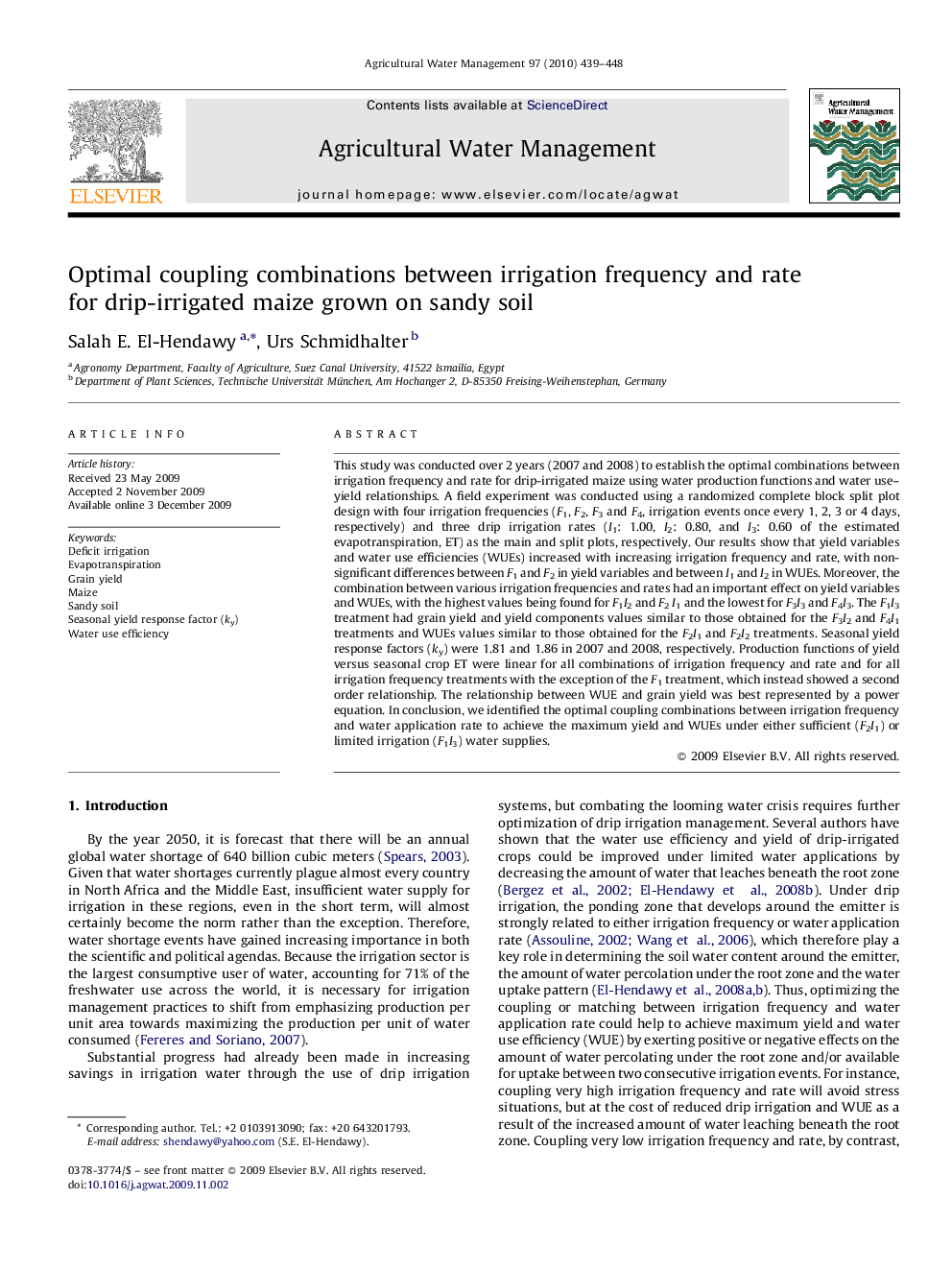| کد مقاله | کد نشریه | سال انتشار | مقاله انگلیسی | نسخه تمام متن |
|---|---|---|---|---|
| 4479931 | 1316465 | 2010 | 10 صفحه PDF | دانلود رایگان |

This study was conducted over 2 years (2007 and 2008) to establish the optimal combinations between irrigation frequency and rate for drip-irrigated maize using water production functions and water use–yield relationships. A field experiment was conducted using a randomized complete block split plot design with four irrigation frequencies (F1, F2, F3 and F4, irrigation events once every 1, 2, 3 or 4 days, respectively) and three drip irrigation rates (I1: 1.00, I2: 0.80, and I3: 0.60 of the estimated evapotranspiration, ET) as the main and split plots, respectively. Our results show that yield variables and water use efficiencies (WUEs) increased with increasing irrigation frequency and rate, with non-significant differences between F1 and F2 in yield variables and between I1 and I2 in WUEs. Moreover, the combination between various irrigation frequencies and rates had an important effect on yield variables and WUEs, with the highest values being found for F1I2 and F2I1 and the lowest for F3I3 and F4I3. The F1I3 treatment had grain yield and yield components values similar to those obtained for the F3I2 and F4I1 treatments and WUEs values similar to those obtained for the F2I1 and F2I2 treatments. Seasonal yield response factors (ky) were 1.81 and 1.86 in 2007 and 2008, respectively. Production functions of yield versus seasonal crop ET were linear for all combinations of irrigation frequency and rate and for all irrigation frequency treatments with the exception of the F1 treatment, which instead showed a second order relationship. The relationship between WUE and grain yield was best represented by a power equation. In conclusion, we identified the optimal coupling combinations between irrigation frequency and water application rate to achieve the maximum yield and WUEs under either sufficient (F2I1) or limited irrigation (F1I3) water supplies.
Journal: Agricultural Water Management - Volume 97, Issue 3, March 2010, Pages 439–448